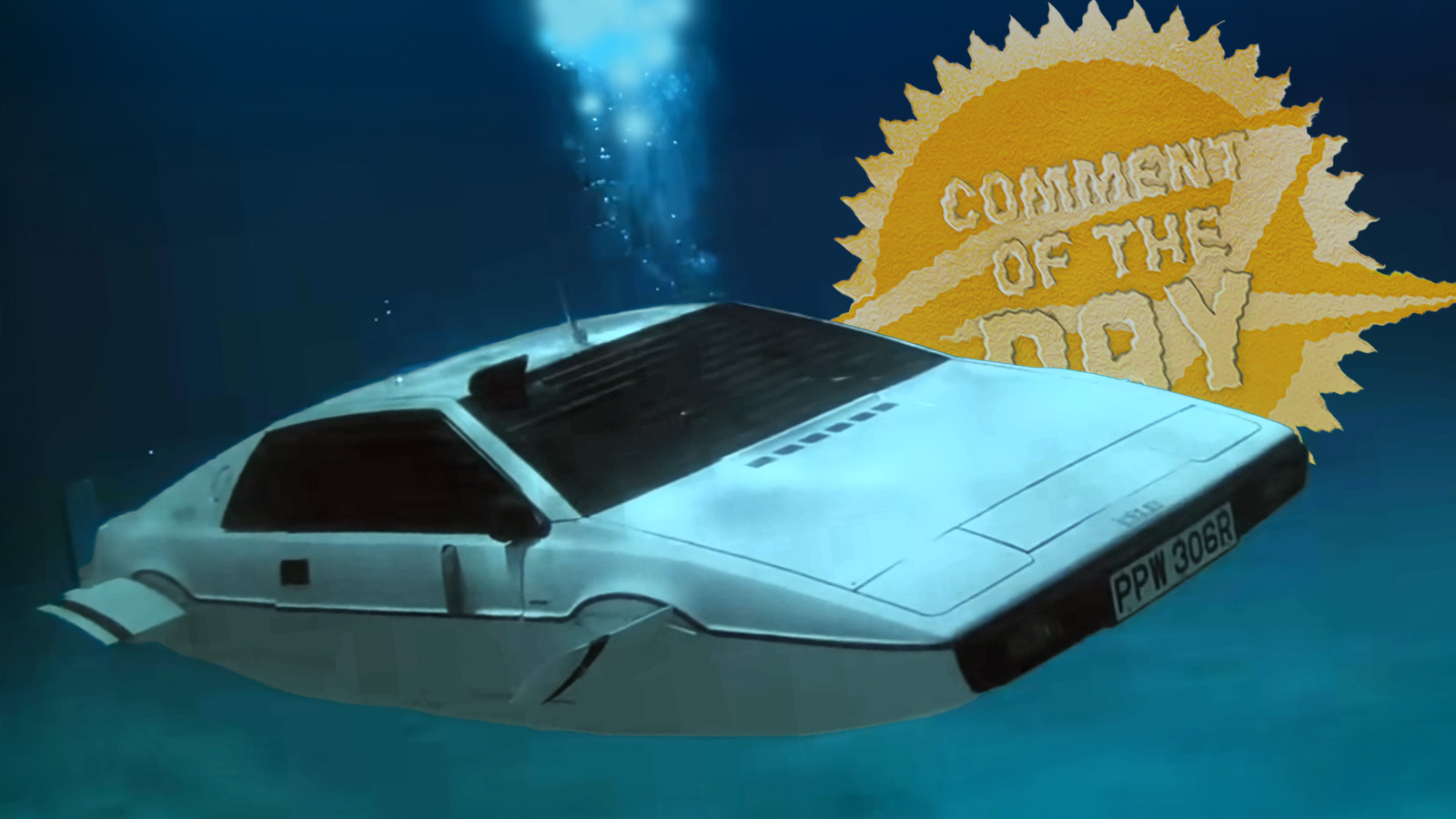Jeep is a brand with a storied and well-documented history. There are diehard fans that can rattle off every engine ever sold in a flat-fender, or recite the differential options available on the XJ on a year by year basis. And yet, there’s one Jeep that is barely documented or discussed at all—a Grand Wagoneer that actually wasn’t really built by Jeep at all.
Weird things happen when a far-off company starts building cars under license. Suddenly, you start getting oddball trims and strange extra features as the company tweaks the design to best suit the needs and tastes of their local market. Sometimes automakers will go so far as to fit completely different engines or drivetrains based on what is most convenient and affordable.
That’s precisely what happened down in Mexico in the mid-1980s. Jeep was still happily churning out copies of the classic Wagoneer, while south of the border, a dying factory was doing much the same. As the production line ground to a halt under tough economic conditions and dwindling parts supplies, one very unique Grand Wagoneer was born, quite unlike any other.

Down Mexico Way
The story of the forgotten Grand Wagoneer begins with VAM, a Mexican automaker seldom known outside the North American nation. First formed as part of privately-owned industrial concern SOMEX in 1946, it was initially branded as Willys Mexicana. The company was responsible for distributing Willys-Overland and AMC product for the Mexican market and building some models under license.
Come 1963, the Mexican government made a push to encourage local vehicle manufacturing, hoping to jumpstart a domestic auto industry of its own. The government came to an agreement with AMC, and Willys Mexicana became Vehículos Automotores Mexicanos, or VAM for short. As part of this development, the company established a fully-fledged factory for manufacturing AMC engines, along with Jeep and Rambler products. Government rules stated the vehicles had to include at least 60% locally-sourced parts. AMC maintained a 40% interest in VAM, but did not manage or otherwise control the Mexican operation.
VAM built local versions of AMC product using a majority of locally sourced components.
Over the years, VAM’s product lines changed and shifted to follow what AMC was doing in the US. When AMC had a rich range of attractive automobiles on the market, so did VAM. While VAM was largely independent in a manufacturing sense, the company was largely reliant on AMC when it came to actually developing new vehicles. By the late 1970s, the company was making its money selling Gremlins, Javelins, and Pacers, as well as plenty of locally-built Jeep CJ5s and Wagoneers.
Come 1980, Renault took over AMC, picking up its 40% stake in VAM in turn. Two years later, the Mexican economy hit a major recession, with the country and currency in serious turmoil. With auto sales screeching to a halt, VAM filed for bankruptcy and suspended production. By 1983, the company fell under Renault’s control. A trickle of AMC cars flowed out of the company for one more year to make the most of existing parts inventory and deals with suppliers, before production ended once and for all.

While VAM had given up on the AMC models, the company saw that Jeep production continued. However, the VAM plants were underutilized, making Jeep product alone, and the Mexican auto market remained depressed into the late 1980s. By 1987, things reached breaking point. The Mexican government paid Renault $200 million US to fully take over the rest of VAM and assume its debts. Renault would then proceed to shut down the operation for good.
As its days were drawing to a close, one of VAM’s final vehicles in production was its version of the Grand Wagoneer. It decided to go out in a blaze of glory, producing a short final run of the best Jeeps it could possibly put together. Thus was born the 1987 Grand Wagoneer Ambassador, a stylish dying gasp from a factory soon to close.
This rare example of the Ambassador was up for sale at a Mexican classic car dealer in 2022. El Unicornio, indeed.
Unlike the hefty Grand Wagoneers of today, The Ambassador was no three-row SUV; in fact, it wouldn’t even seat five. Instead, it came in a more luxurious four-seater configuration. In place of the rear bench, VAM installed a second pair of front seats. It was a savvy parts bin move, but the effect was that the rear passengers effectively got a pair of comfortable captain’s chairs with prodigious legroom.
To further the luxurious feel, VAM created a landau-style roof treatment. This partially covered the rear windows, increasing privacy for the rear passengers.



Propulsion was via a uniquely Mexican engine. VAM had been building licensed copies of the famous AMC inline-six for some time, and had developed its own 282-cubic inch variant in 1971. It was similar to AMC’s own 258 ci. engine, but was cast with a slightly larger bore, taking displacement from 4.2 liters up to 4.6 liters.
Produced solely in VAM’s own engine plant in Lerma, Mexico, the 4.6-liter put out 129 horsepower and 218 pound-feet of torque. It was specifically tuned to run on the lower-octane gasoline that had become common in Mexico at the time. This was VAM’s top engine spec—the Mexican automaker hadn’t deigned to explore V8 options in the 1980s. In the Ambassador, it was paired with a three-speed automatic driving the Jeep’s four-wheel-drive system.



The production run was strictly limited; most sources agree that somewhere between 10 and 30 examples were built. The Ambassador was available in just two colors—black, or white. As you’d expect, they were optioned to the nines. Buyers of the last edition got an AM/FM stereo, air conditioning, chrome rooftop luggage racks, power windows, power locks, and power mirrors—all the equipment VAM had on hand.
As is the way, VAM also saw fit to pepper the body and interior with a number of “Ambassador” badges to make sure you knew you had something special. Most surviving examples also wear a stylish disc-style wheel and whitewall tires.



To this day, the Ambassador is revered for being a shining end to the VAM era. Still, it’s mostly remembered in Mexico alone. In part, it’s because VAM was little-known outside of its home country. Beyond the unusual seating configuration, too, the Ambassador isn’t a particularly outstanding trim of the Grand Wagoneer. While nicely equipped, it ultimately couldn’t match the American-built Grand Wagoneers from the end of the AMC era in 1987, which featured a gruntier 160 horsepower from the 5.9-liter AMC 360 V8.
The Ambassador is a special sort of holy grail. As a vehicle, it’s not a particularly exceptional Grand Wagoneer. It’s not the fastest, most powerful, or greatest—but it is highly unique. Ultimately, though, it’s most important because of its place in history. It stands as a monument to all the hard work and craft that everyone put in at Vehículos Automotores Mexicanos, and lives on as a running reminder of what was achieved there.

Not every automotive story has a happy ending. There are a great many more failures and closures than victories when you stretch the timeline long enough. In the end, once the factories are shuttered and the dealership signs are painted over, it’s the cars that survive. The Ambassador is one of them. The Ambassador remembers.
Image credits: VAM, Jeep, NetMotors Garage de Clasicos via YouTube screenshot, Mecum Auctions via auction listing









The funny thing about this article to me, is that I’ve heard of the VAM inline 6 variants before, but that Ambassador trim is a new one. Also very interesting to see how different the seats were than the US market Grand Wagoneers, as they appear to have recline, lumbar support adjustment, and a high back design.
Every AMC/Jeep enthusiast has heard of the Lerma 282 engine, designed in part to handle notoriously low octane PEMEX nationalized gasoline.
The Ambassador trim Jeep Grand Wagoneer was at least something I hadn’t been aware of.
I love this thing!! A whole series of reasonable decisions leads to a deeply odd low volume grand wagoneer – with a low compression engine and reclining back seats.
I would so rock this.
well it would be better for unshrouding valves for better airflow. though I suppose you would have to get a 4.0 HO head to take advantage. Still the 3.905 bore is bigger than the 3.88 modern unit. I assume if the 4.0 Head fits, this might make for a much torquier motor in the end that will likely also gain some good old HP at the same time. Though I imagine the difficulty in finding usable parts to make one of these would likely outweigh any benefits. This all sounds like an old L – Stroker engine build though.
Lewin, you are filling some very big shoes writing about a Jeep on here, especially a classic one. You should consider it high praise!
BTW, is your name of Welsh origin because it looks like it could be- minus a Y in there somewhere?
Or a double L at the beginning
Thank you for the kind words! Some outlets report on my articles and just assume they’re from David, it’s rather amusing.
My name is of German origin.
I’m not surprised to hear that at all. Keep up the good work.
BTW, I recently watched the movie Goldstone and there was what looked like an older two-door Landcruiser in it completely kitted out for the bush It was great looking and I don’t recall ever seeing one of those stateside. Were those common and are there still many around?
It may have been a shortened 4Runner with a removable rear-top but it was definitely an Aussie model not sold here.
It’s kind of handsome actually, in a ‘decades past’ kind of way.
I’m not a Jeep guy, but my neighbor’s kid just got their first car: a shockingly clean/intact, plain white basic-looking XJ with a hitch, and I’ve always liked the XJs, so I’m a bit envious. 🙂
Or a double L.
Oops, that was intended as an add-on to my own comment above.
Big XJ fan myself. I love big fridge-like vehicles, hence my purchase of a 740 Turbo many years ago…
I had a 740 (I think… I honestly can’t recall the exact model, but it was probably a 740 Turbo because I was always surprised by its speed despite it being a big, squared-off box) and liked it. I drive an early XC90 now (my first SUV ever, purchased on a whim) and like it a lot as a daily driver.
My neighbor’s kid’s XJ is really nice… no idea where she got it (just shopping, a relative, a dealer, etc…) it’s super clean and just plain white: no extra junk anywhere on it (just a tow hitch, which is eminently practical). Honestly, it looks so good it makes me want one of my own. 😉
Great first car, but it’ll probably curse him with the Jeep lifestyle.
She’s a her, but yes, that can happen… maybe David was taken for a ride in an old Wrangler when he was just a wee one, and his obsession only grew from there? 😉 She doesn’t strike me as a car gal, but I honestly don’t know her all that well (there’s a 40 year age gap between us). Seems like a good kid though, which is nice vs. some of what I see in police bodycam vids on Youtube. 😉
Hey, now we know what Kia’s current logo designers used as inspiration!
hahahah oh dear yes
Was that an entire baseball team getting transported in the Gremlin commercial? Seems kinda dangerous. God, I miss the ignorance of the ’70s and ’80s. It was so stupid. Unlike the ignorance of today which just seems more hateful.
“When AMC had a rich range of attractive automobiles on the market”
Did I miss the /s sarcasm?
Every other AMC car was based on the Concord.
Attractive? I can’t think of an attractive AMC car… Gremlin, Spirit, Matador, Concord, Pacer, Eagle…. Nope, Nope, Nope, Nope and Nope.
El Eagle es puro sexo automovilístico envuelto en el mejor grado de óxido de Detroit. Muy macho!
Nostalgia makes you forget all the negatives when something has been gone for a while – like your old girlfriend. AMC went out of business for good reason and old Grand Cherokee’s went to the crusher with rust everywhere and getting 9 miles per gallon in the process.
I will say that I did like the 258ci six. Great motor, silky smooth, and I was aware of the tall deck Mexican built 282ci version. But it also weighed as much as a small asteroid. Everything AMC was past it’s sell by date and they had nothing new.
Well, that and the New stuff was just poorly built French stuff. Jeep is what kept them going in the Macho 70’s. The AMX spirit was not any worse than the similar year Mustang 2 or even the by then neutered and sticker festooned Z28’s all were lucky to get 5.0 liters of 2 barrel power, retarded down to maybe 120 ish HP
the SC360 Hornet was pretty attractive for a small car in the 70’s. and that is where the concord started. I also like the 1970 and older Javelins, the SC/Rambler and to an extent the 2 door matador if you remove the 1970’s safety bumper up front. Amc made do with very little and was surprisingly plucky about making lemonade from lemons it seemed.
Javelin was sweet.
Interesting story, but is it really accurate to say a slightly larger-bored AMC straight 6 is a “weird engine you’ve never heard of”?
they also made a large bore 252 in Mexico, it was an overbored 232, or economy 6.
I’d never heard of it! It’s a unique variant that many other US Jeep fans probably haven’t heard of either. Wagoneer with a 4.6? That’s a (slightly) weird engine you haven’t heard of.
Great story. Both for the vehicles and VAM.
Might be interesting to know more about the Javelins they built.
To my surprise the landau panels don’t offend me.
I’m thinking the same thing. A tiny bit awkward, perhaps, but they also work.
Luxury SUV ahead of its time.
Other side of the world, 10 years earlier, Valmet 4.2 liter diesel on Jeep Wagoneer, https://www.suomenmaa.fi/uutiset/kotimainen-traktoridiesel-teki-bensarosvosta-talousihmeen-jeep-valmet-oli-yllattavan-toimiva-viritys/
It is more surprising that the Mexican versions did not used the South American tornado six as it had even lower compression and thus could handle the poor fuel in Mexico.
I’m fairly sure I’ve seen one of these in Colorado recently. I’ve never been in to wagoneers but saw that back panel on the glass and thought weird modification. Mexican market vehicles always are interesting.
“In place of the rear bench, VAM installed a second pair of front seats. It was a savvy parts bin move, but the effect was that the rear passengers effectively got a pair of comfortable captain’s chairs with prodigious legroom.”
But were they SOFT CORINTHIAN LEATHER seats?
Did they run out of rear seats? What is savvy about using up front seats and limited production unless there is more to the story.
What more do you need to know than “fewer parts” and “rear passengers effectively got a pair of comfortable captain’s chairs with prodigious legroom.”
More rear legroom and a more luxurious feel while spending almost zero additional money!
Since it was pre-Chrysler Jeep, probably not.
Since “Corinthian leather” was just a marketing term from an Omaha ad agency to describe leather produced in Newark, New Jersey maybe that’s not a bad thing after all.
I’m honestly surprised Chrysler hadn’t trademarked it thinking it was a competitive advantage.
They had moved onto Mark Cross. A friend of mine had a LeBaron with MC leather. It was quite nice.
I bet that interior reeks{or use to} of cigs, Pabst, bodily fluids and gasoline.
Pabst?
More like Dos Equis.
Probably Tecate.
I really want to get a CJ7 and put the RENEGADO decal on the hood. I love that kind of stuff.
I had a ’64 Wagoneer with a Camaro V-8 that I wheeled in Mexico in ’73-’74 when I was a student at the Universidad de las Americas in Cholula, Puebla. It had not of the luxury of the later Wagoneers, but it served me well in Mexico & Guatemala.
It looks like they had six (or maybe 15? 25?) kids crammed into the car in that Gremlin commercial, and I’m not sure any of them are wearing seatbelts!
Life was cheaper in the 1970s
Looking at the VAM logo in the CJ-7 ad, I think I see where Kia got the inspiration for their current logo design.
Cool story. My favorite VAM is the Lerma. Basically a Spirit 5-door hatchback. There was also a 3door hatch, but on a longer wheelbase than the Spirit.
Somewhere down there, a very annoying antique store owner with a rebelious daughter drives one of these.
Still probably driven by profesores on their way to the country club in their tweed blazers with elbow patches. Some things are universal.
Might want to check the box for bulletproof glass, though. Free thinking wasn’t super trendy in 80s Mexico.
I was thinking the market for these probably would have appreciated armouring. At least for those landau privacy panel things.
It’s got you covered. Everything about it from the black paint to the vinyl-textured panels to those plain wheel discs says “hearse”.
I don’t think you’d find many professors in US country clubs. Maybe in Mexico.
Good way to go out: build a few special editions, then VAMoose ( or VAMos as our southern neighbors would say).
VAMoNOS injection?